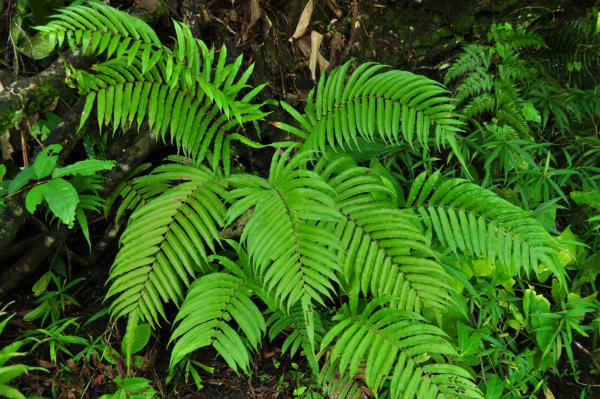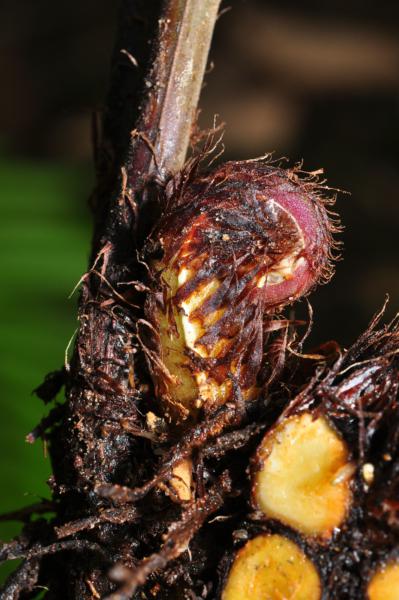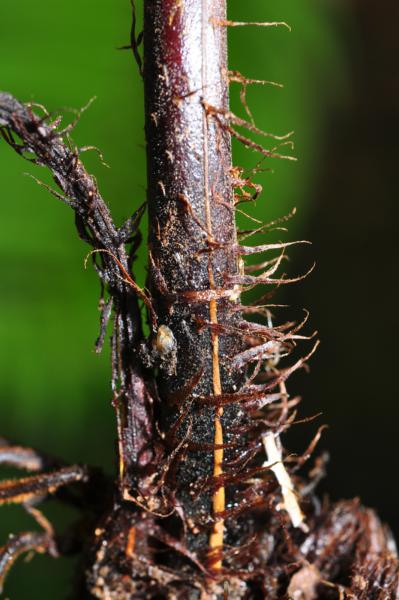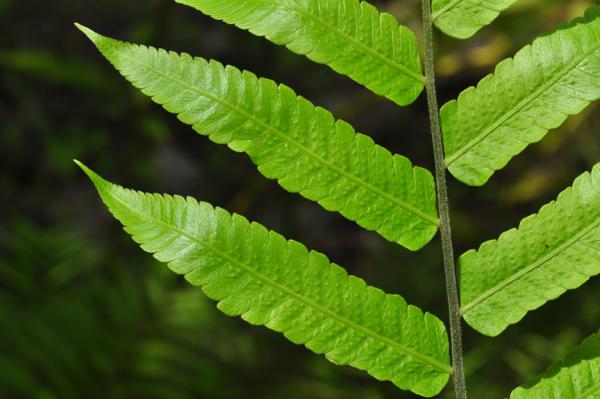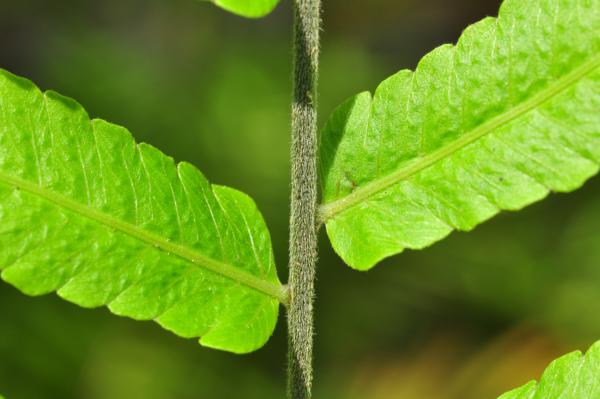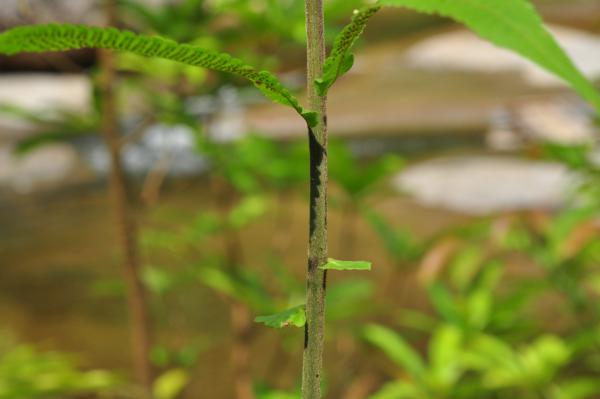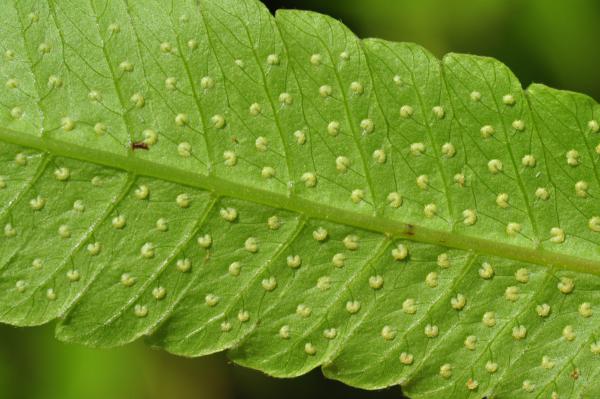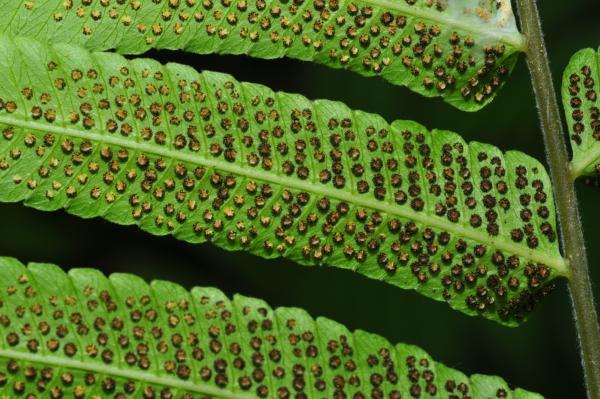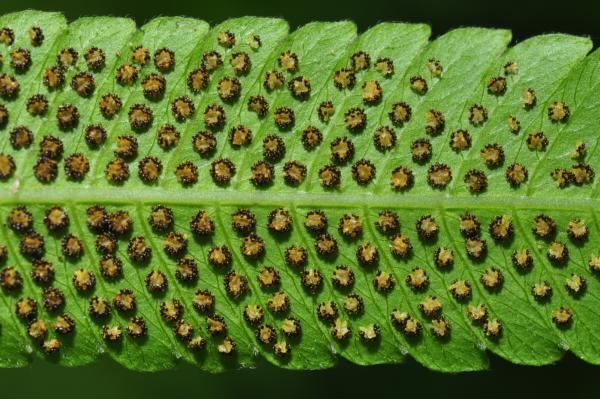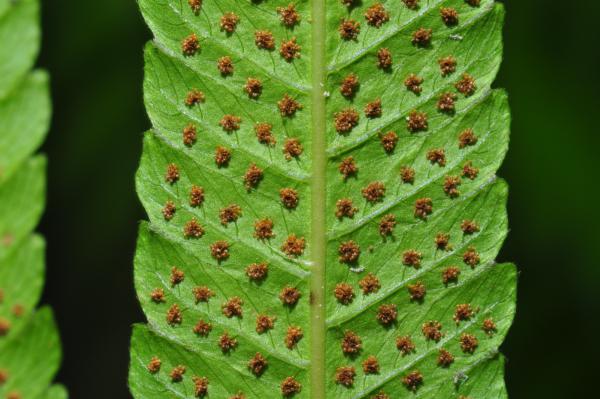
Cyclosorus megaphyllus (Mett.) Ching
Family
Thelypteridaceae
Nomenclature
Cyclosorus megaphyllus (Mett.) Ching, Bull. Fan Mem. Inst. Biol. 8: 225. 1938; Holttum, Rev. Fl. Malaya ed. 1, 2: 268, f. 154. 1955 [‘1954’]. – Aspidium megaphyllum Mett., Ann. Mus. Lugd. Bat. 1: 233. 1864. – Thelypteris megaphylla (Mett.) K.Iwats., Mem. Coll. Sci. Univ. Kyoto B. 31: 34. 1964; Tagawa & K.Iwats., SouthE. Asian Stud. 3(3): 80. 1965; Tagawa & K.Iwats., SouthE. Asian Stud. 5: 70. 1967; Tagawa & K.Iwats., Acta Phytotax. Geobot. 23: 54. 1968; Tagawa & K.Iwats., Fl. Thailand 3: 417, f. 43.3–4. 1988. – Type: Mettenius cited Reinwardt and Zippelius, Java (L).
Nephrodium pennigerum Hook., Spec. Fil. 4: 82. 1862, non C.Presl 1825. – Sphaerostephanos penniger Holttum in B.K.Nayar & S.Kaur, Companion Handb. Ferns Brit. India: 209. 1974, nom. inval.; Holttum, Fl. Males., Ser. II, Pterid. 1: 461, f. 1a–h. 1982 [‘1981’]; Boonkerd & Pollawatn, Pterid. Thailand: 229. 2000.
Cyclosorus euphlebius auct. non Ching: Holttum, Dansk Bot. Ark. 23: 232. 1965.
Description
Rhizome short, massive; scales linear-lanceolate with long tails, 5–15 by 2 mm, dark brown, hairy at margin as well as on dorsal surface. Stipes stramineous, hairy throughout, bearing small reduced pinnae on upper portion, 40–80 cm long. Laminae 50–100 by 34–50 cm, with 17–25 pairs of full-sized pinnae; rachis densely setose hairy; lower pinnae suddenly reduced to form butterfly-shaped auricles, middle pinnae larger, ascending, linear-lanceolate, widest at middle portion, rather suddenly narrowing towards acute apex, narrowing towards base, cuneate to subtruncate at basiscopic and truncate to auricled at acroscopic bases, sessile, 18–30 by 2–3.2(–4) cm, lobed to 1/4 way towards costa; segments oblong-subdeltoid, oblique, round to moderately acute at apex, entire; papyraceous to chartaceous, green, covered with round yellow glands on both surfaces; veins pinnate, veinlets simple, several lower pairs anastomosing, pubescent. Sori medial; indusia round reniform to horse-shoe-shaped, sometimes confluent, pubescent .
Distribution in Thailand
SOUTH-WESTERN: Kanchanaburi; PENINSULAR: Nakhon Si Thammarat, Trang, Yala.
Wider Distribution
Malesia.
Ecology
On moist slopes in dense evergreen forests at low altitudes.
Proposed IUCN Conservation Assessment
Least Concern (LC). This species is widespread and not under any known threat.
Voucher specimens - Thailand
Middleton et al. 5512, Nakhon Si Thammarat, Khao Luang National Park (E).
Habit
Rhziome and crozier
Base of stipe
Upper surface of pinnae
Upper surface of rachis and pinnae
Abruptly reduced basal pinnae
Lower surface of pinna and young sori
Lower surface of pinnae with mature sori
Sori
Old sori
Site hosted by the Royal Botanic Garden Edinburgh. Content managed by Stuart Lindsay, Gardens by the Bay, Singapore and David Middleton, Singapore Botanic Gardens. Last updated 24 January 2012
